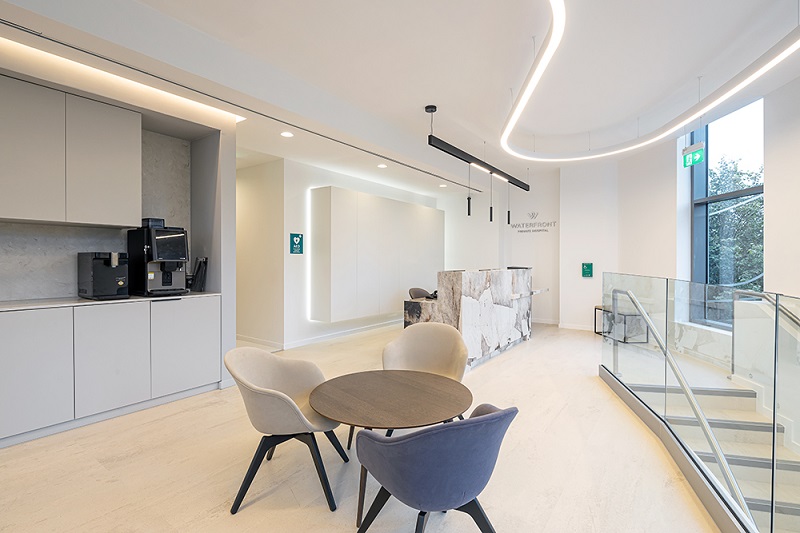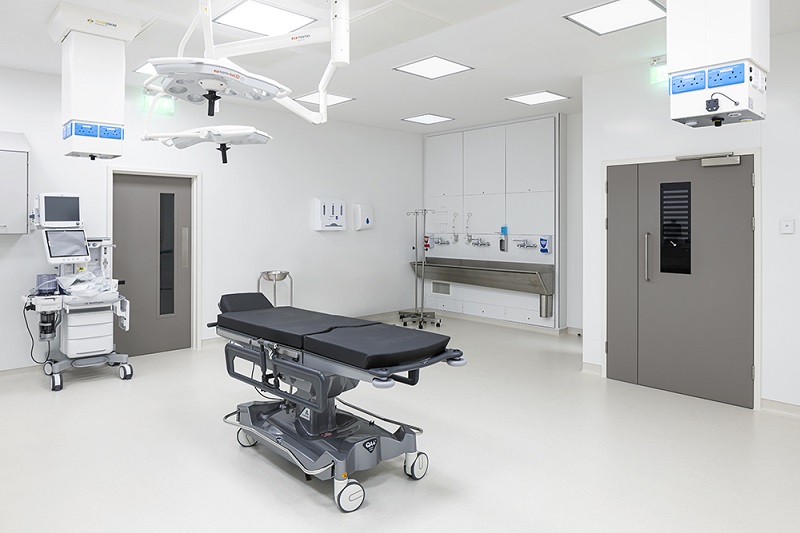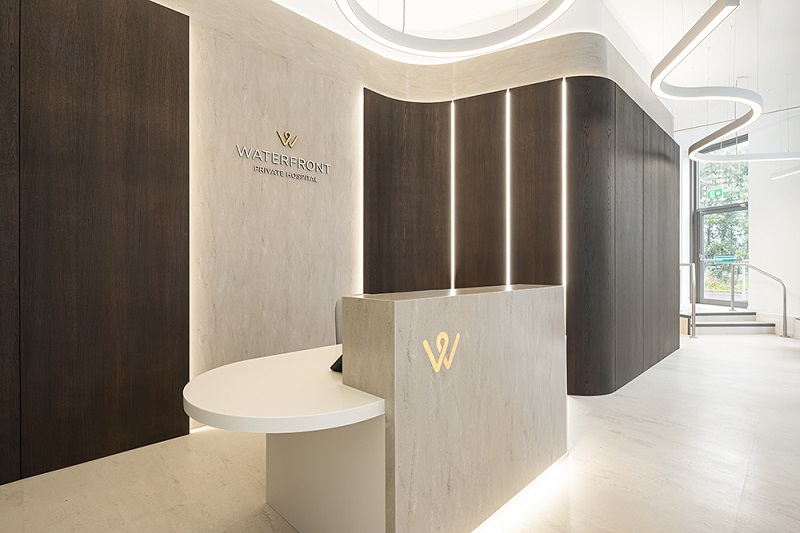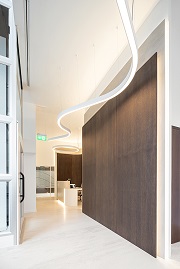A state-of-the-art independent private hospital specialising in cosmetic and plastic surgery has been completed in Granton on the outskirts of Edinburgh.
The Waterfront Hospital, owned and managed by consultant plastic surgeons, Awf and Omar Quaba, has been designed by NVDC Architects.
Following an initial search, NVDC founder, Farahbod Nakhaei, viewed several shortlisted properties in Edinburgh which were suitable for redevelopment, helping to appraise each for suitability, as well as potential limitations.
The chosen building in Granton had originally been part of a Morrisons supermarket development, but had remained empty and unutilised for over 14 years.
Harnessing previous experience in delivering private surgical facilities, the team at NVDC, led by Nakhaei and project architect, Anna Dach, produced the design as part of a competitive pitch process.
A key component of the brief, in addition to being fully Scottish Health Technical Memorandum (SHTM) compliant, was to include one fully SHTM-compliant general anaesthesia operating suite, a second operating theatre for local anaesthesia, treatment rooms, and other ancillary spaces as well as a generous waiting area that could also be used for educational purposes.
Incorporating several complex design elements, including a bespoke staircase connecting the two main floors and following the curve of the external facade, the new hospital was completed in the summer and recently opened to patients.
Spaces were designed to enhance both physical and mental wellbeing
Nakhaei said: “Having delivered several projects of a similar nature, we understood the complexities of adhering to rigorous SHTM guidelines and building regulations.
“And we were able to combine our understanding and passion to create a truly-amazing and uplifting space which reflects the high standards of treatment and care provided by the client.
“Awf and Omar share our passion and ethos of creating spaces which promote and enhance both the physical and mental wellbeing.”
The Waterfront Hospital features a cutting-edge building management system (BMS) with the ability to control and monitor the entire building environment to maintain the highest clinical standards.
A key component of the brief was to include one fully SHTM-compliant general anaesthesia operating suite
As well as controlling and maintaining air changes, and required pressures, the BMS also controls the entire building’s mechanical and electrical services, such as access, ventilation, heating, lighting, medical gases, and power.
Another key requirement of a complex building such as this is controlling access to various parts of the building and NVDC researched and specified the access control system, ensuring it had the required functionality while being in keeping with the overall design of the building.
And the NVDC team worked extensively with M&E consultants, Charles Scott & Partners; contractor, Souness and Boyne, the access control manufacturer; and the client’s IT team to ensure the system could provide the complex array of requirements for managing the different levels of access to various parts of the building.
The access control system and the BMS can each be controlled via a mobile phone app.
The entire roof space has also been adapted to house necessary plant equipment.
As part of the design, NVDC included a prefabricated modular rooftop plantroom which would house plant equipment in a weatherproof environment.
The project features a cutting-edge building management system (BMS) with the ability to control and monitor the entire building environment to maintain the highest clinical standards
In addition, NVDC was instrumental in the design of an energy-efficient lighting system operated by movement-controlled PIR sensors.
 Nakhaei explains: “From the outset we were given a clear brief with aspirations and objectives. In turn, the client trusted our expertise and together we were able to create a fantastic building which will offer expert care.”
Nakhaei explains: “From the outset we were given a clear brief with aspirations and objectives. In turn, the client trusted our expertise and together we were able to create a fantastic building which will offer expert care.”
Dach added: “Every project, site, and client is unique so we start every project by listening to our client’s requirements and analysing each particular building or site to identify its strengths and potential.
“And we used 3D visuals and modelling, plus mood boarding, to refine our design throughout the various stages.
“Following this initial appraisal stage, we combine our experience, knowledge, and creativity, to develop a set of design ideas which communicate the desired look, feel, and direction of the project.
“It is always satisfying seeing a project come to fruition and for clients to be excited about our design.”
